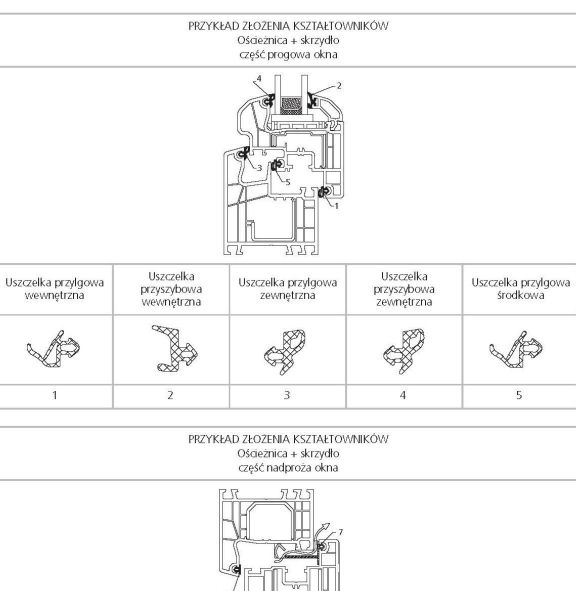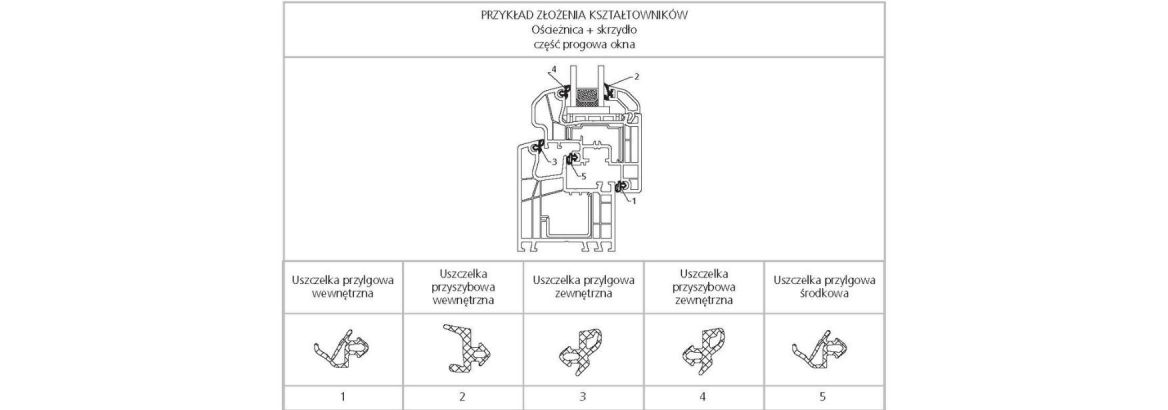Both types are designed to prevent water from getting inside the profile, which could lead to rusting of the fittings.
- Retaining gaskets also provide protection against heat loss, noise, moisture and dust penetration.
- There are two glazing gaskets, one on the outside and one on the inside of the window.
Gaskets should be characterized by high resistance to weather conditions, such as differences in temperature and humidity, and good plasticity, thanks to which they can return to their original shape after being compressed when closing the leaf. Most often they are made of synthetic rubber (EPDM) or thermoplastic polyester elastomer (TPE-E), which meet these criteria and retain their properties from -40 to 110 degrees Celsius.
Without properly installed seals, it is impossible to think about good performance of window constructions in terms of:
- waterproof
- air infiltration
- sound insulation
- thermal insulation
In windows made of different types of window sections, the number, type and shape of the gaskets used may vary. They can also fulfill very different roles. Starting from taking over the tasks of the central rebate in MD class sections, to regulating the air flow through the infiltration slots. Although for years there has been a tendency on the market to limit the number of types of gaskets within a single structure, still in some systems of window profiles in a standard single-part PVC window equipped with infiltration slots there can be as many as 7 different types of gaskets. It is therefore worth knowing what seals are, how to call them and where they can be found in the window. Selected types and functions of gaskets are presented in the tables below.
.jpg)

